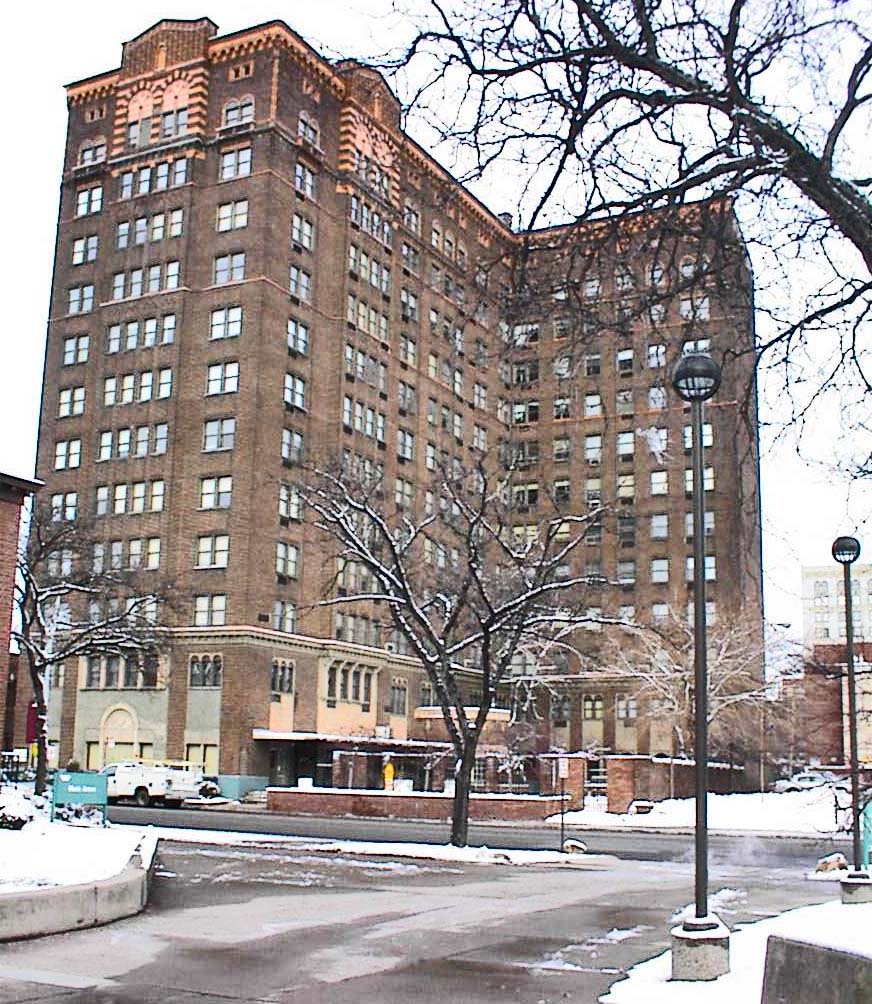

The 1920s were the best years the city of Detroit in terms of economic growth and demographic increase. Many different style of convenient and attractive living were briefly popular at that time. Recall that home ownership rates were much lower in the 1920s than at present since financing arrangements were rudimentary compared to the present situation in which working class families can buy homes. At that time, you needed large down payments and because of the way interest rates were structured, an owner built up equity slowly. A new idea developed for an attractive living arrangement—an apartment building offering all the charms and amenities of a hotel. A couple or a family could rent an apartment in such a building, expect daily maid service and eat all of their meals in a restaurant located within their building if they wished. In the 1920, labor force participation rates for women married to prosperous husbands were low but these wives often engaged themselves in the volunteer work for betterment of the community; activities that were organized at the Women’s City Club on Park or the Women’s Exchange Building on Adams.
The Belcrest Apartment Hotel was constructed on Cass as a residential hotel for a very upscale clientele. It was completed just before Paul Phillipe Cret’s Detroit Institution of Art opened and five years after Cass Gilbert’s beautiful Detroit Public Library was completed.
Charles N. Agee—one of Detroit’s highly talented
architects whose career was truncated by the Great Depression—used a Neo-
Romanesque approach in The Belcrest. This is a T-shaped building with the base
of the T facing Cass Avenue. Agree’s emphasis was on the vertical so as
you stand across Cass and appreciate this building you are impressed by the
height of the structure. There are three tall projecting bays, one toward Cass
and two perpendicular to that structure. But Agree did not omit the horizontal
to offset the vertical. You will notice his extensive use of terra cotta cornices
to define the third floor, the eleventh floor and the highest level of the building.
The terra cotta embellishment offsets the dominating emphasis on the vertical.
In my opinion, this is a fine building but Agree’s real architectural
creativity was most clearly manifest in the Vanity Ballroom—a now decaying
and dilapidated structure on East Jefferson at Newport just southwest of the
Detroit—Grosse Pointe Park divider. Even in disrepair and decay, the Vanity
Ballroom shows the creativity and brilliance of Agree.
The idea for a cultural center close to downtown Detroit
flowed from the City Beautiful movement that was popularized at the 1893 Columbian
Exposition in Chicago. I believe that Detroit Mayor Brietmeyer first appointed
a committee to design a beautiful Detroit in 1911—a commission that included
Louis Sullivan and called for the Cultural Center than you now appreciate near
the intersection of Woodward and Warren.
If Henry Ford Hospital and the Detroit Medical Center continue to thrive as
medical research and service centers and if Wayne State University continues
it its present evolution toward a leading urban research university and if the
three nearby museums are successful in their major fund raising drives, Detroit’s
Cultural Center will become one of the nation’s most interesting and stimulating
such centers. The well maintained Belcrest will likely be the home for many
of the highly trained individuals who work at or study at the many nearby cultural
institutions. Prosperity and growth for Detroit’s Cultural Center is a
key component of the city’s revitalization in its fourth century.
Architect: Charles N. Agree
Architectural Style: Neo-Romanesque
Date of Completion: 1926
Use in 2004: Apartment building
Photo: Ren Farley, January, 2004
Website for apartment rentals: www.perminvestments.com/Belcrest
City of Detroit Local Historic District: Not listed
State of Michigan Registry of Historic Sties: Listed November 20, 1983
State of Michigan Historical Market: None erected as of early 2004
National Register of Historic Sites: Listed: May 31, 1984
Return to Multi-family Housing
Return to Homepage